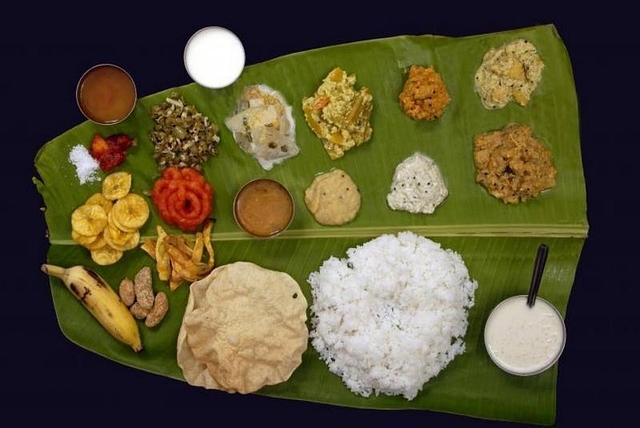
Powering Up Rice For A Healthier India
Food fortification has been a popular public health intervention across the world for well over a century.
Given that despite best efforts, it might be difficult to overcome the delivery constraints of existing nutrition programs in totality, food fortification can be adopted as a cost-effective strategy in India for tackling micronutrient deficiencies.
As a large-scale public health strategy, it can help to strengthen the nutritional intake of vulnerable groups.
To tackle malnutrition holistically, deficiencies of micronutrients such as Iron, Zinc and Vitamin A need to be addressed in addition to calorific insufficiency. According to the National Family Health Service-4, the prevalence of anaemia in children between 6 to 59 months remains high at 58 per cent in 2015-16, although it has declined from 69 per cent in 2005-06. Similarly, one in every two women between the ages of 15 and 49 years continues to be anaemic. Other emerging economies like Brazil and China fare much better than India on nutrition indicators.
Recognising the magnitude of this challenge, the government launched the POSHAN Abhiyaan in March 2018, to drastically improve nutritional outcomes among children, adolescents, pregnant women and lactating mothers through a multi-ministerial convergence approach.
In another significant move, the government recently approved a centrally-sponsored pilot scheme on the fortification of rice and its distribution under the Public Distribution System, for a period of three years, beginning in 2019-20. Under the scheme, pilot projects will be initiated on rice fortification in States/Union Territories that have a sizeable rice consuming population. Districts that have a higher prevalence of micronutrient deficiencies will be prioritized.
Professional agencies will be engaged under the scheme for educating communities and other stakeholders about the benefits of consuming fortified rice on a regular basis. This is crucial because efforts to strengthen supply will not be effective unless the demand-side challenges are also addressed through heightened awareness at the community level. For instance, a ‘Rapid Survey on Children’ commissioned by the Ministry of Women & Child Development a few years ago showed that Iron Folic Acid tablets and supplementary nutrition were consumed by only about a third of the women under various government programs.
Food fortification has been a popular public health intervention across the world for well over a century. The United States launched its food fortification policy in 1980 while South Africa mandated fortification of wheat flour and maize in 2003. Closer home, China has introduced enriched rice to control niacin and riboflavin deficiencies while Bangladesh passed the “Vitamin A enriched Edible Oil Law,” in 2013.
Furthermore, the evidence base in favour of fortifying staples is robust. Senegal is a case in point. The country’s food fortification program came into existence in 2010 following the passage of a mandatory law for reinforcing refined oils with Vitamin A and wheat flour with Iron and Folic Acid.
Surveys showed that the coverage of fortified flour and oil among women of childbearing age was high, with as many as 85 per cent consuming fortified flour and 73 per cent consuming fortified oil at least once a week. As a result of this intervention, 70 per cent of women received at least 10 per cent of their daily recommended nutrient intake of Iron and Vitamin A. In Costa Rica, anaemia levels in children declined from 19.3 per cent to 4 per cent while those in women reduced from 18.4 per cent to 10.2 per cent following the fortification of flour and milk with Iron.
Given that despite best efforts, it might be difficult to overcome the delivery constraints of existing nutrition programs in totality, food fortification can be adopted as a cost-effective strategy in India for tackling micronutrient deficiencies. As a large-scale public health strategy, it can help to strengthen the nutritional intake of vulnerable groups.
Moreover, the extensive coverage of the National Food Security Act schemes including the Targeted Public Distribution System (TPDS) provide an important opportunity for tackling micronutrient deficiencies. Rajasthan and Gujarat, for instance, have distributed fortified commodities through the TPDS ration shops in order to address anaemia. In Gajapati district of Odisha, rice from the Food Corporation of India is fortified with Iron at a centralised location and subsequently distributed as part of the mid-day meal program in schools.
The scheme approved by the government can, therefore, pave the way for fortified food to be gradually incorporated into existing programs like the Integrated Child Development Services and TPDS by leveraging lessons from previous pilots as well as those conducted under the newly-launched scheme. Standards for food fortification have already been notified by the Food Safety and Standards Authority of India. Over time, mechanisms for engaging the private sector will also need to be forged for the fortification of staples.
Despite significant economic growth and the consequent social gains it has engendered, the prevalence of pernicious and often invisible malnutrition continues to present a daunting challenge. Food fortification, if systematically implemented at scale, can make a significant dent in India’s malnutrition woes.
Disclaimer: The views expressed are personal.